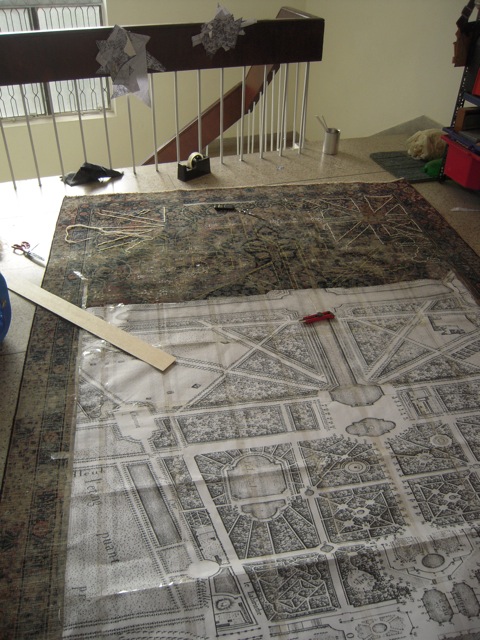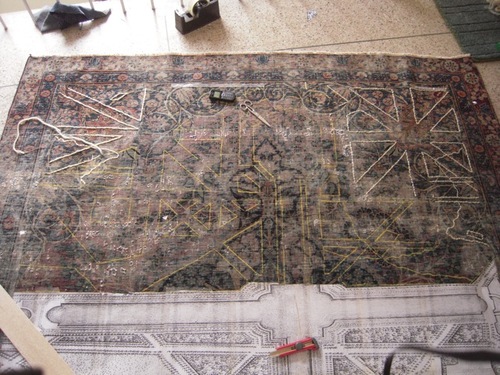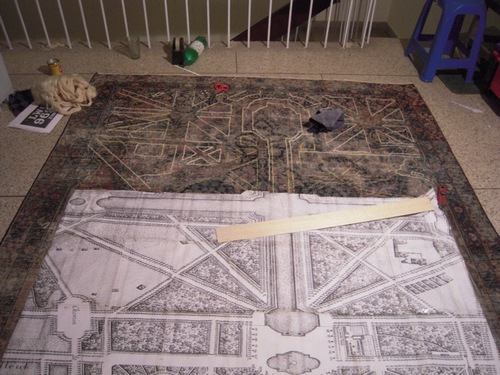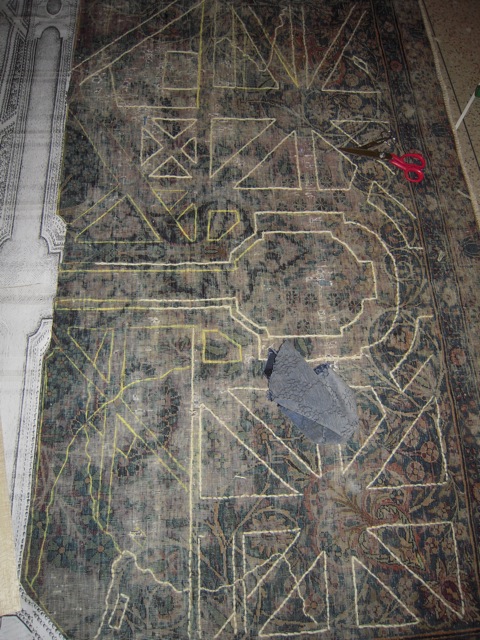Garden Carpet Heterotopia (see below)
28th May, pm, after the first day of working on the full rug.
Using a buff coloured thick wool thread.
Michel Foucault. Of Other Spaces (1967), Heterotopias.
(Third principle) "…. perhaps the oldest example of these heterotopias that take the form of contradictory sites is the garden. We must not forget that in the Orient the garden, an astonishing creation that is now a thousand years old, had very deep and seemingly superimposed meanings. The traditional garden of the Persians was a sacred space that was supposed to bring together inside its rectangle four parts representing the four parts of the world, with a space still more sacred than the others that were like an umbilicus, the navel of the world at its centre (the basin and water fountain were there); and all the vegetation of the garden was supposed to come together in this space, in this sort of microcosm. As for carpets, they were originally reproductions of gardens (the garden is a rug onto which the
whole world comes to enact its symbolic perfection, and the rug is a sort of garden that can move across space). The garden is the smallest parcel of the world and then it is the totality of the world. The garden has been a sort of happy, universalizing heterotopia since the beginnings of antiquity (our modern zoological gardens spring from that source)"1
1.) This text, entitled "Des Espace Autres," and published by the French journal Architecture /Mouvement/ Continuité in October, 1984, was the basis of a lecture given by Michel Foucault in March 1967. Although not reviewed for publication by the author and thus not part of the official corpus of his work, the manuscript was released into the public domain for an exhibition in Berlin shortly before Michel Foucault's death. Translated from the French by Jay Miskowiec.













